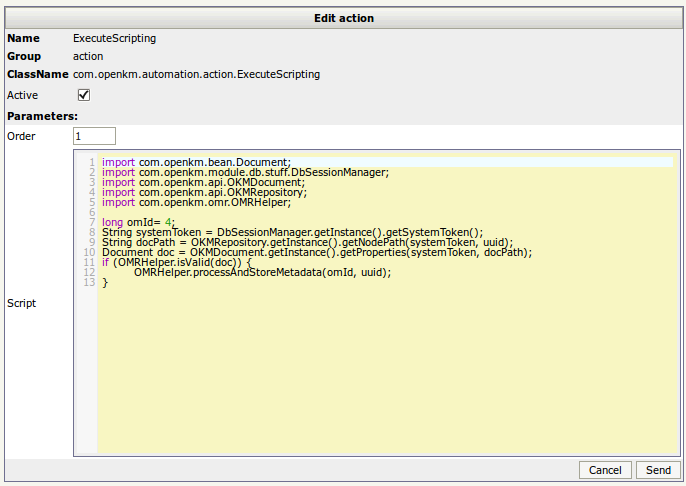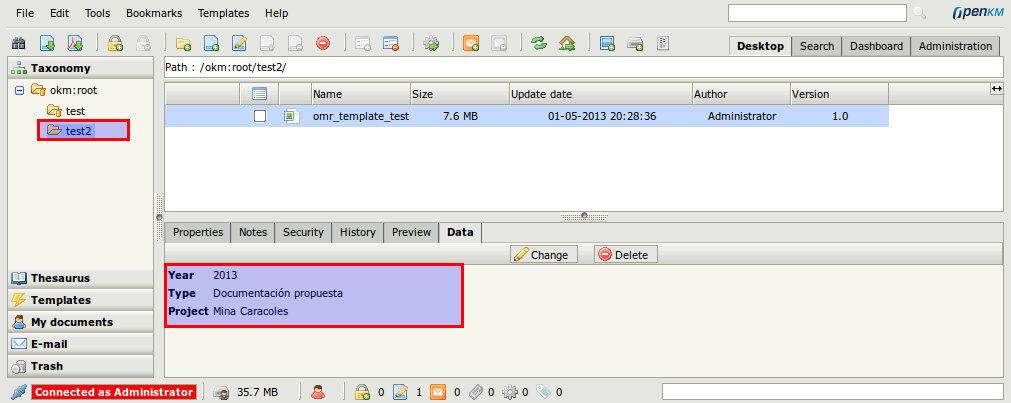Difference between revisions of "OMR scripting"
From OpenKM Documentation
m |
|||
| Line 14: | Line 14: | ||
String docPath = OKMRepository.getInstance().getNodePath(systemToken, uuid); | String docPath = OKMRepository.getInstance().getNodePath(systemToken, uuid); | ||
Document doc = OKMDocument.getInstance().getProperties(systemToken, docPath); | Document doc = OKMDocument.getInstance().getProperties(systemToken, docPath); | ||
| + | |||
if (OMRHelper.isValid(doc)) { | if (OMRHelper.isValid(doc)) { | ||
OMRHelper.processAndStoreMetadata(omId, uuid); | OMRHelper.processAndStoreMetadata(omId, uuid); | ||
Revision as of 21:05, 1 May 2013
The script process an image with OMR engine from Automation scripting feature, each time new document is uploaded. With minimal changes can be used in conjuntion with crontab.
- omId value is the template id.
import com.openkm.bean.Document;
import com.openkm.module.db.stuff.DbSessionManager;
import com.openkm.api.OKMDocument;
import com.openkm.api.OKMRepository;
import com.openkm.omr.OMRHelper;
long omId= 4;
String systemToken = DbSessionManager.getInstance().getSystemToken();
String docPath = OKMRepository.getInstance().getNodePath(systemToken, uuid);
Document doc = OKMDocument.getInstance().getProperties(systemToken, docPath);
if (OMRHelper.isValid(doc)) {
OMRHelper.processAndStoreMetadata(omId, uuid);
}
Example
Create a automation task based on event document creation and post execution.
With one validation based on folder path and one scripting action.
The script value is:
Where omId value is template id;
Each time document is uploaded into folder path ( or subfolders ) the image is processed by OMR engine.




